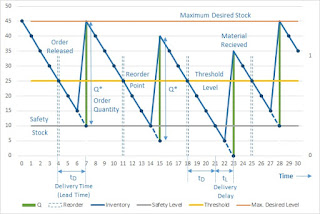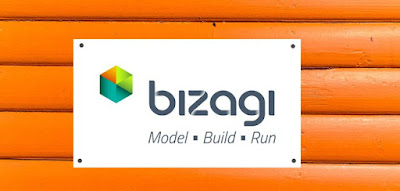Inventory Policies: The Basics
Inventory Policies
Inventory policies: inventory definition, stock classification, inventory control issues, continuous and periodic inventory review, order sizeWhat Is Inventory?
Inventory (stock) – materials in a supply chain or in a segment of a supply chain, expressed in quantities, locations and/or values, not used at present, but kept for the future use, consumption or sale (Krzyżaniak, 2009).
Widely adopted stock classification is as follows:
- Materials stock (raw materials, components)
- Work-in-progress stock
- Finished products stock
- Spare parts and auxiliary materials stock
Next stock types are classified by the reasons for keeping:
- Cycle stock
- Safety stock
- Seasonal stock
- „Speculation” stock
- Strategic stock
One more classification by rotation
- Fast moving (rotating) stock
- Slow moving (rotating) stock
- Not moving (rotating) stockObsolete stock
- Emergency stock
Inventory Control Issues
Variables
To describe the inventory movement there are two variables:
- the inventory quantity (the amount of reserve),
- and time.
Changing the volume of a stock for a certain time is the main issue for ensuring needs in materials or products to be solved for a storage location.
Managers have to support the material stocks at certain storage location to satisfy the consumption for a given (target) level in despite of the peculiarities of replenishment and consumption.
Not being able to directly influence the parameters of needs in materials (products), managers apply leverages on supply in accordance with the objectives of inventory control.
Main Issues
There are two main issues in inventory control
- How much to order product to replenish stock?
- When to make order to replenish stock?
Both issues are interrelated. Based on the replenishment size, which is needed to meet the desired or predicted (planned) needs, managers can determine when orders must be issued.
To change the inventory volume managers have only two tools:
- Size of an order (Q).
- The time interval between two successive orders (T).
Continuous and Periodic Inventory Review
For inventory (supply, replenishment) planning horizon we are mainly using two major classes of inventory policies
- Continuous Review (also referred to as a perpetual system or a fixed-order-quantity system or two-bin system)
- Periodic Review (also referred to as a fixed-time-period system)
Continuous inventory review, also known as perpetual review, involves a system that tracks each item and updates inventory counts each time an item is removed from inventory. For example, a retailer may use bar code scanners to record customer purchases and update inventory counts every time a cashier scans a product code. Continuous inventory review permits real-time updates of inventory volume. It makes easier to set time and volume to inventory replenishment. This review also facilitates accurate accounting, and the inventory system generates real-time costs of goods sold. The main disadvantage of this class of inventory policy consists in the cost of implementation. Bar code scanners, inventory software and computer systems are needed for continuous inventory review (Pearson).
Periodic inventory review involves counting and documenting inventory at specified times. For example, a retail store operating under a periodic review policy might count inventory at the end of each month. Periodic inventory review reduces the time managers spend analyzing inventory counts. It allows devoting more time for other aspects of running the business. This review is helpful when the monitoring of stocks is manual, or the number of items involved is extremely large, or when constraints on ordering-day exist. However, it may not provide accurate inventory counts for businesses with high-volume sales. Managers must make assumptions between inventory review periods regarding inventory counts. This can make it difficult to ascertain when items are to be reordered. It also can make accounting less accurate (Pearson).
How much is Q?
The answer to the question about how much to order can also be based on two criteria. The ordered quantity is either
- a predetermined order quantity Q or
- a variable quantity, which supplements the inventory in each case up to a certain level S.
The level S is often called Target Inventory Level or Order-Up-To Inventory Level or Base Stock Level.
All huge variety of other strategies in the inventory control is based on discussed above inventory reviews with a fixed size of an order or a fixed interval of time between orders.
The main assumption in the classical inventory reviews is constancy or averaging demand size for a product stock per unit time. However, the demanded amount of stock usually changes over time. Practice of inventory management is focused on rapid decision making with the applying flexible tools.
To find out more about the "Fix Order-Size" and "Fix Time Period" Systems used for inventory control click the link Read more >>>




Comments
Post a Comment